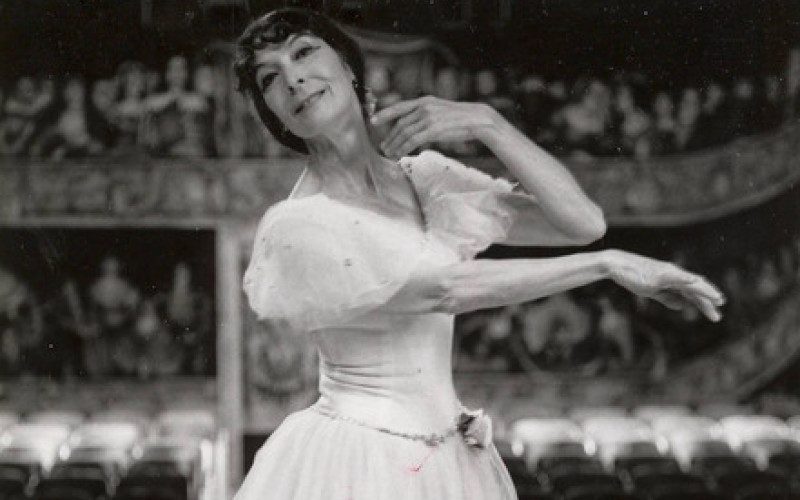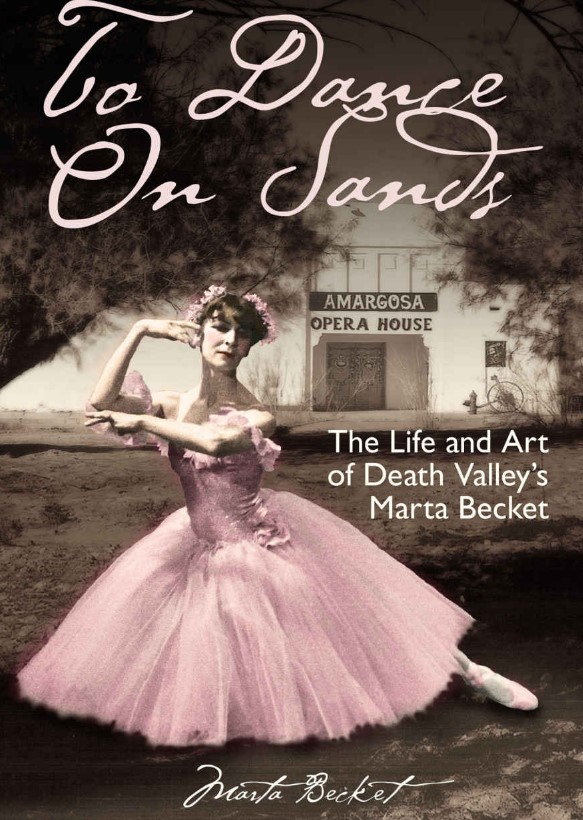In 1967, Marta Becket, a former Broadway dancer, headed out West with her husband on a one-woman tour.
In Death Valley, their aptly-named Covered Wagon travel trailer blew a tire. The nearest settlement was thirty miles away.
They limped into Death Valley Junction, population 20. It looked like a ghost town. The square was dominated by an rundown hotel and the abandoned workers’ flats of a defunct borax mining company.
But it had a gas station, thank goodness. With a hand crank telephone. In 1967.
It also had a derelict community theater. While her husband Tom repaired the tire, Marta wandered over to the theater. She peered through a tiny hole in the back door.
Sunlight fell through pieces of ruined roof and illuminated a small stage. Kangaroo rats scurried to and fro. Warped wooden benches sat empty, waiting. At the foot of a sunbeam, a doll’s head with blue glass eyes stared back at her.
“As I peered through that tiny hole,” Marta Becket later wrote, “I had the distinct feeling that I was looking at the other half of my life. The building seemed to be saying, ‘Take me. Do something with me. I offer you life.'”
Marta and Tom returned to New York, tied up their loose ends, and returned on August 9, 1967, Marta’s 43rd birthday. She christened the old community center The Amargosa Opera House. They had just $500 to renovate it.
Marta Becket opened a few months later to an audience of twelve. Many nights, she danced to an empty theater.
But she always danced.
After a flash flood dump six inches of mud into theater, Marta decided to paint a Renaissance audience on its walls. Not because, as one newspaper reported, so she would be guaranteed an audience each night.
In her memoir, she says,
I painted a Renaissance audience to surround my performance with an atmosphere complementary to what I performed.
Death Valley Junction is no field of dreams. But for the next fifty years, Marta Becket built it into an oasis of creative expression. She rescued a ghost town theater and transformed it into something magical. They came in droves.
We can watch videos of her performances and admire her exquisite murals, but the woman herself remains an enigma, a spirit of the winds and dunes.
Perhaps that’s as it should be. Perhaps that’s how she’d want it.
August 9, 2019 would have been Marta’s 95th birthday. As I complete a longer feature to celebrate her life, please stay tuned to this space and enjoy the five-minute documentary on Marta Becket below!
If you enjoyed this short feature on Marta, you’ll also love these inventive late-blooming women:

